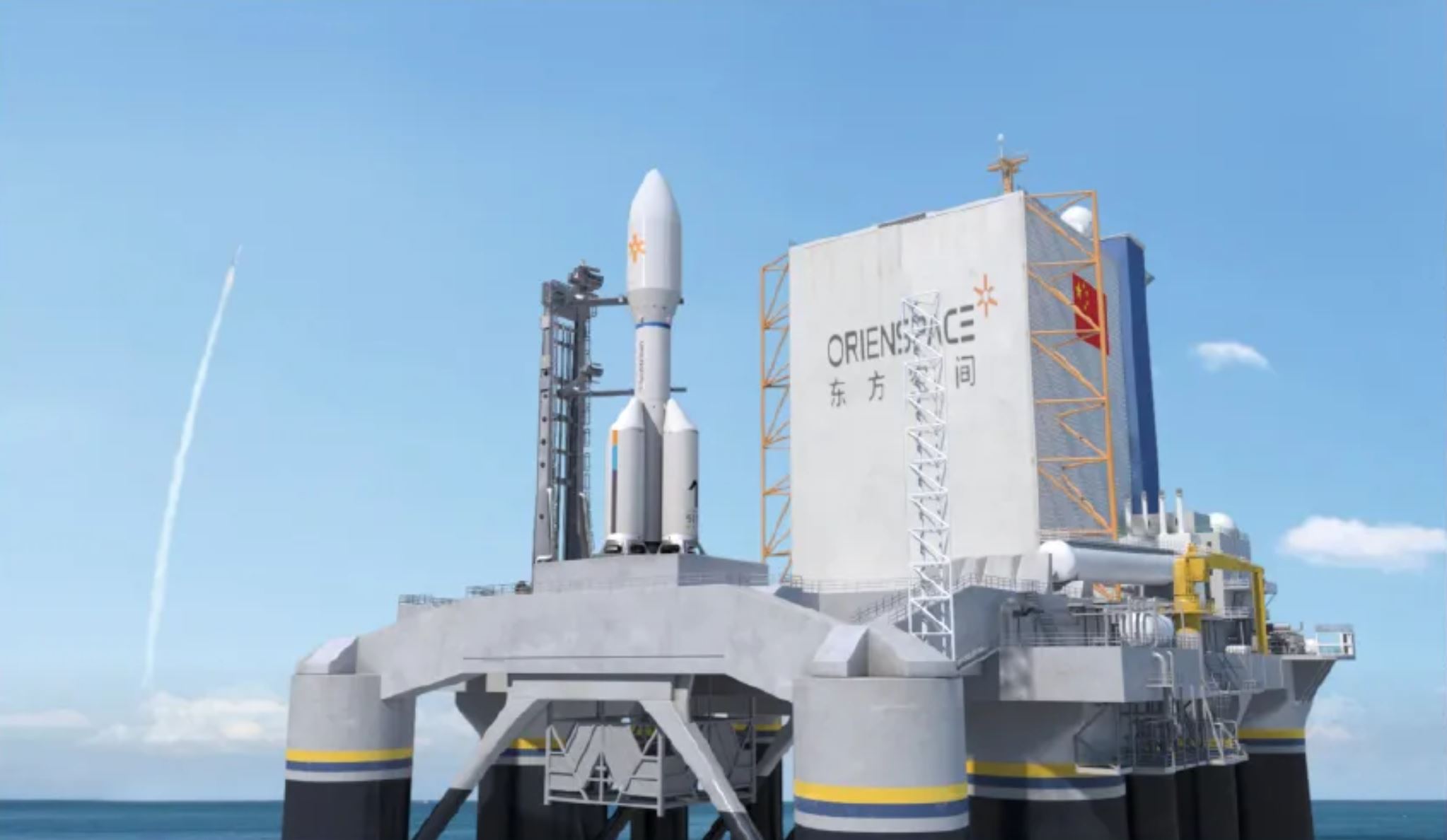HELSINKI — Chinese launch vehicle developer Orienspace has raised $59.9 million in a Series A funding round, which the company says it will use for a first rocket launch and new engine development.
The new round was led by HikeCapital, followed by CMBC Int’l Holdings and others, including previous investors, according to a company press release (Chinese) May 20.
The financing will be used for the development and first flight of the “Gravity-1” medium-lift launch vehicle, with a test flight planned for mid 2023.
Gravity-1 will be 31.4 meters long with a 4.2-meter-diameter fairing and a takeoff mass of 400 metric tons. It will use a liquid propellant core stage and four solid propellant boosters.
With the capability to lift around 6,500 kilograms of payload to low Earth orbit, or 3,700 kilograms to 700-kilometer sun-synchronous orbit, it would be the largest-capacity launcher in China’s nascent commercial space sector.
The funding will also go towards accelerating the development of a 100-ton-thrust, reusable kerosene-liquid oxygen rocket engine for the Gravity-2 launcher. The firm says it will follow the general idea of iterative and systematic innovation.
Orienspace was founded in late 2020, backed by initial funding of $65 million. It announced in January it had secured a further $47 million. The new round makes the company one of the best backed Chinese launch startups, despite its newcomer status.
CMBC Int’l Holdings last month led A+ round financing for another launch startup, Deep Blue Aerospace, which conducted a kilometer-level rocket vertical takeoff and vertical landing test May 6.
Orienspace intends to begin to use a commercial launch vehicle final assembly and integration test center around the end of year, located at China’s eastern spaceport at Haiyang, Shandong province.
The Haiyang spaceport facility was established to facilitate sea launches and recently hosted a third Long March 11 solid rocket sea launch, using a new, nearby final assembly and test base for the first time.
Orienspace will compete with fellow Chinese launch firms Landspace, iSpace, Galactic Energy and others including Space Pioneer and Deep Blue Aerospace for commercial contracts and opportunities expected from a 13,000-satellite national satellite internet megaconstellation and future commercial services to the under-construction Chinese space station.
The China Aerospace Science and Technology Corporation (CASC) operates the country’s Long March rocket series and conducts the vast majority of China’s civil and military launches. CASC is planning more than 50 launches in 2022, including six space station-related missions.
China has been fostering a commercial space sector since late 2014, opening the industry to private capital and providing incentives, policy support and facilitating technology transfer through a military-civil fusion national strategy.
The progress of launch startups has been checkered, however. Beijing-based iSpace became the first private Chinese launch company to reach orbit in 2019, but last week suffered its third consecutive failure with its Hyperbola-1 solid rocket. Galactic Energy is the other firm to achieve orbit, also with a light-lift solid rocket, and plans a next launch in the coming months.
A number of the firms are planning the first launches of more complex and partially reusable liquid launchers over the next year or two, with Landspace expected to make the first attempt with its methane-liquid oxygen Zhuque-2 in the near future.
